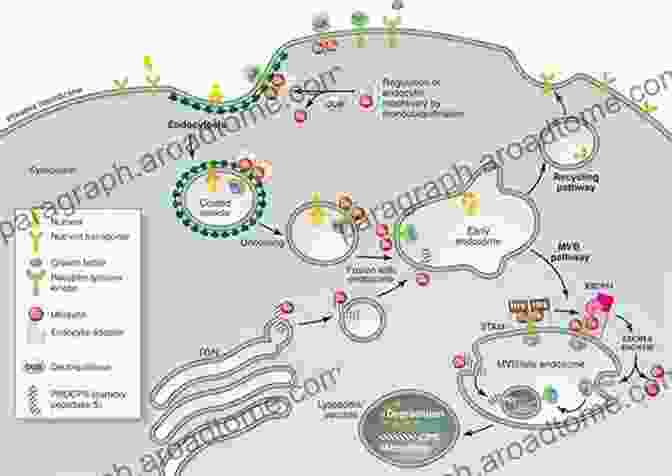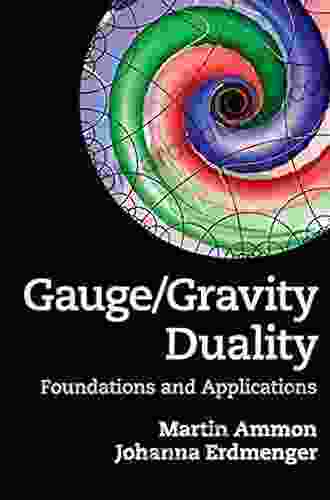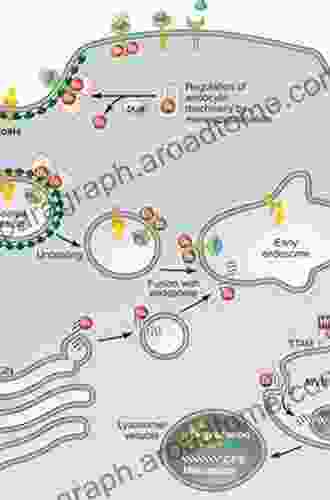Ubiquitination and Transmembrane Signaling: An In-Depth Exploration

Ubiquitination, the post-translational modification of proteins with ubiquitin, is a crucial process that regulates a wide range of cellular events. Its effects extend far beyond protein degradation, encompassing a wide array of cellular processes, including signal transduction, cell cycle control, DNA repair, and immune function. This article delves deep into the intricate world of ubiquitination, with a particular focus on its role in transmembrane signaling, shedding light on the molecular mechanisms and cellular consequences of this dynamic interplay.
Ubiquitination: A Versatile Molecular Switch
Ubiquitination involves the covalent attachment of ubiquitin, a small protein, to target proteins through isopeptide linkages. This modification can occur at lysine residues within the target protein or through the N-terminal methionine. The ubiquitin molecule itself can be further modified by the addition of additional ubiquitin molecules, forming polyubiquitin chains of varying lengths. This diversity in ubiquitination patterns allows for a remarkable level of specificity, with different types of chains triggering distinct cellular responses.
5 out of 5
| Language | : | English |
| File size | : | 19862 KB |
| Text-to-Speech | : | Enabled |
| Screen Reader | : | Supported |
| Enhanced typesetting | : | Enabled |
| Print length | : | 611 pages |
The process of ubiquitination is orchestrated by a complex network of enzymes, including ubiquitin-activating enzymes (E1s),ubiquitin-conjugating enzymes (E2s),and ubiquitin ligases (E3s). These enzymes work in concert to transfer ubiquitin from E1 to E2 and then to the target protein, facilitated by the E3 ligase. Different E3 ligases exhibit selectivity for specific target proteins, ensuring precise control over the ubiquitination process.
Ubiquitination in Transmembrane Signaling
Transmembrane signaling refers to the transmission of extracellular signals across the plasma membrane into the cell interior. Ubiquitination plays a critical role in this process, regulating the activity, localization, and degradation of transmembrane receptors, thereby modulating signal transduction pathways.
Receptor Activity: Ubiquitination can directly influence the activity of transmembrane receptors. For instance, the ubiquitination of epidermal growth factor receptor (EGFR) by the E3 ligase c-Cbl leads to its downregulation, inhibiting downstream signaling pathways. Conversely, deubiquitination, the removal of ubiquitin, can promote receptor activation. The E3 ligase Mdm2, known for its role in p53 regulation, can also ubiquitinate EGFR, leading to its stabilization and enhanced signaling.
Receptor Localization: Ubiquitination can control the subcellular localization of transmembrane receptors. The E3 ligase Nedd4, for example, ubiquitinates the sodium-potassium pump, targeting it to the lysosome for degradation, thereby regulating ion homeostasis. Similarly, ubiquitination can direct receptors to specific membrane compartments, influencing their signaling properties.
Receptor Degradation: Ubiquitination often serves as a signal for receptor degradation. The ubiquitination of transmembrane receptors by E3 ligases, such as the SCF complex, typically leads to their internalization and subsequent degradation by the proteasome. This process ensures the timely termination of signaling pathways and prevents receptor overstimulation.
Ubiquitination and Signal Transduction Pathways
The effects of ubiquitination on transmembrane signaling extend beyond the receptors themselves, influencing the activity of downstream signaling molecules. Ubiquitination can modulate the activity of kinases, phosphatases, and other signaling intermediates, thereby fine-tuning the cellular response to extracellular stimuli.
For example, the E3 ligase parkin, associated with Parkinson's disease, can ubiquitinate the kinase Akt, leading to its inhibition and suppression of pro-survival signaling. Conversely, the deubiquitinase USP10 can remove ubiquitin from Akt, promoting its activation and enhancing cell survival. These examples highlight the intricate interplay between ubiquitination and signal transduction pathways, shaping cellular responses to external cues.
Emerging Roles of Ubiquitination in Transmembrane Signaling
Ongoing research continues to uncover novel roles for ubiquitination in transmembrane signaling. Ubiquitination has been implicated in immune cell signaling, regulating the activation and function of immune receptors. Additionally, ubiquitination has been shown to modulate the signaling properties of ion channels, influencing neuronal excitability and synaptic plasticity.
The emerging understanding of ubiquitination in transmembrane signaling holds immense potential for therapeutic applications. Dysregulation of ubiquitination can contribute to various diseases, including cancer, neurodegenerative disFree Downloads, and immune system dysfunction. Targeting ubiquitination enzymes or manipulating ubiquitination patterns could provide novel avenues for treating these diseases.
Ubiquitination stands as a versatile and dynamic molecular switch, playing a central role in transmembrane signaling and a multitude of other cellular processes. Its ability to control protein activity, localization, and degradation provides a precise means of regulating cellular responses to extracellular stimuli. As our understanding of ubiquitination continues to expand, so too does our appreciation of its fundamental importance in health and disease. Further exploration promises to unveil additional layers of complexity and provide valuable insights into the intricacies of cellular signaling and regulation.

5 out of 5
| Language | : | English |
| File size | : | 19862 KB |
| Text-to-Speech | : | Enabled |
| Screen Reader | : | Supported |
| Enhanced typesetting | : | Enabled |
| Print length | : | 611 pages |
Do you want to contribute by writing guest posts on this blog?
Please contact us and send us a resume of previous articles that you have written.
 Book
Book Novel
Novel Page
Page Chapter
Chapter Text
Text Story
Story Genre
Genre Reader
Reader Library
Library Paperback
Paperback E-book
E-book Magazine
Magazine Newspaper
Newspaper Paragraph
Paragraph Sentence
Sentence Bookmark
Bookmark Shelf
Shelf Glossary
Glossary Bibliography
Bibliography Foreword
Foreword Preface
Preface Synopsis
Synopsis Annotation
Annotation Footnote
Footnote Manuscript
Manuscript Scroll
Scroll Codex
Codex Tome
Tome Bestseller
Bestseller Classics
Classics Library card
Library card Narrative
Narrative Biography
Biography Autobiography
Autobiography Memoir
Memoir Reference
Reference Encyclopedia
Encyclopedia Jill Harrington
Jill Harrington Jiri George Drobny
Jiri George Drobny Jennifer L Shawne
Jennifer L Shawne Jill Duffield
Jill Duffield Jeremie Averous
Jeremie Averous Suzette Pare
Suzette Pare John Dewitt
John Dewitt Ron Russell
Ron Russell Mckenna Bailey
Mckenna Bailey Laura Hamilton Waxman
Laura Hamilton Waxman Sprachen Lernen Mal Anders
Sprachen Lernen Mal Anders Mark Galeotti
Mark Galeotti Jenny Kern
Jenny Kern Uk Heo
Uk Heo Thomas Forrest Kelly
Thomas Forrest Kelly Simon Rosser
Simon Rosser Joel Fischer
Joel Fischer Jessie Wilson
Jessie Wilson Joe Hagan
Joe Hagan John Hamer
John Hamer
Light bulbAdvertise smarter! Our strategic ad space ensures maximum exposure. Reserve your spot today!

 John SteinbeckUnveiling the Mysteries of Gravity: Exploring Gauge Gravity Duality from...
John SteinbeckUnveiling the Mysteries of Gravity: Exploring Gauge Gravity Duality from...
 Marvin HayesGeomorphological Geochemical Approach: Revolutionizing Site Assessment and...
Marvin HayesGeomorphological Geochemical Approach: Revolutionizing Site Assessment and...
 Benji PowellGreat Recipes You Can Live Without: Transform Home Cooking with Effortless...
Benji PowellGreat Recipes You Can Live Without: Transform Home Cooking with Effortless...
 Fred FosterArchitecture of Middle Georgia: The Oconee Area - A Captivating Architectural...
Fred FosterArchitecture of Middle Georgia: The Oconee Area - A Captivating Architectural... Neil GaimanFollow ·4k
Neil GaimanFollow ·4k William WordsworthFollow ·13.2k
William WordsworthFollow ·13.2k Samuel BeckettFollow ·13.7k
Samuel BeckettFollow ·13.7k Robert BrowningFollow ·5.9k
Robert BrowningFollow ·5.9k Jan MitchellFollow ·10.3k
Jan MitchellFollow ·10.3k Tyler NelsonFollow ·10.4k
Tyler NelsonFollow ·10.4k W.H. AudenFollow ·3.8k
W.H. AudenFollow ·3.8k Colin RichardsonFollow ·13.1k
Colin RichardsonFollow ·13.1k

 Julio Cortázar
Julio CortázarAn Illustrated Encyclopedia Of Live Concerts And...
Immerse yourself in the...

 Edgar Cox
Edgar CoxNon Physically Assaultive Attachment Based Chronic Covert...
What is Covert...

 Robert Reed
Robert ReedThe Baseball of Why: Unraveling the Intricacies of...
Step up to the plate and...

 Aldous Huxley
Aldous HuxleyTacos and Beer: An Atmosphere of Flavorful Delights
In the realm of culinary adventures,...

 Stan Ward
Stan WardUnlock the Secrets of the Aramaic Jesus: Revelations of a...
Journey Back to the Roots of...

 Vincent Mitchell
Vincent MitchellMillionaire Success Strategies: Your Blueprint for...
Unlock the...
5 out of 5
| Language | : | English |
| File size | : | 19862 KB |
| Text-to-Speech | : | Enabled |
| Screen Reader | : | Supported |
| Enhanced typesetting | : | Enabled |
| Print length | : | 611 pages |




